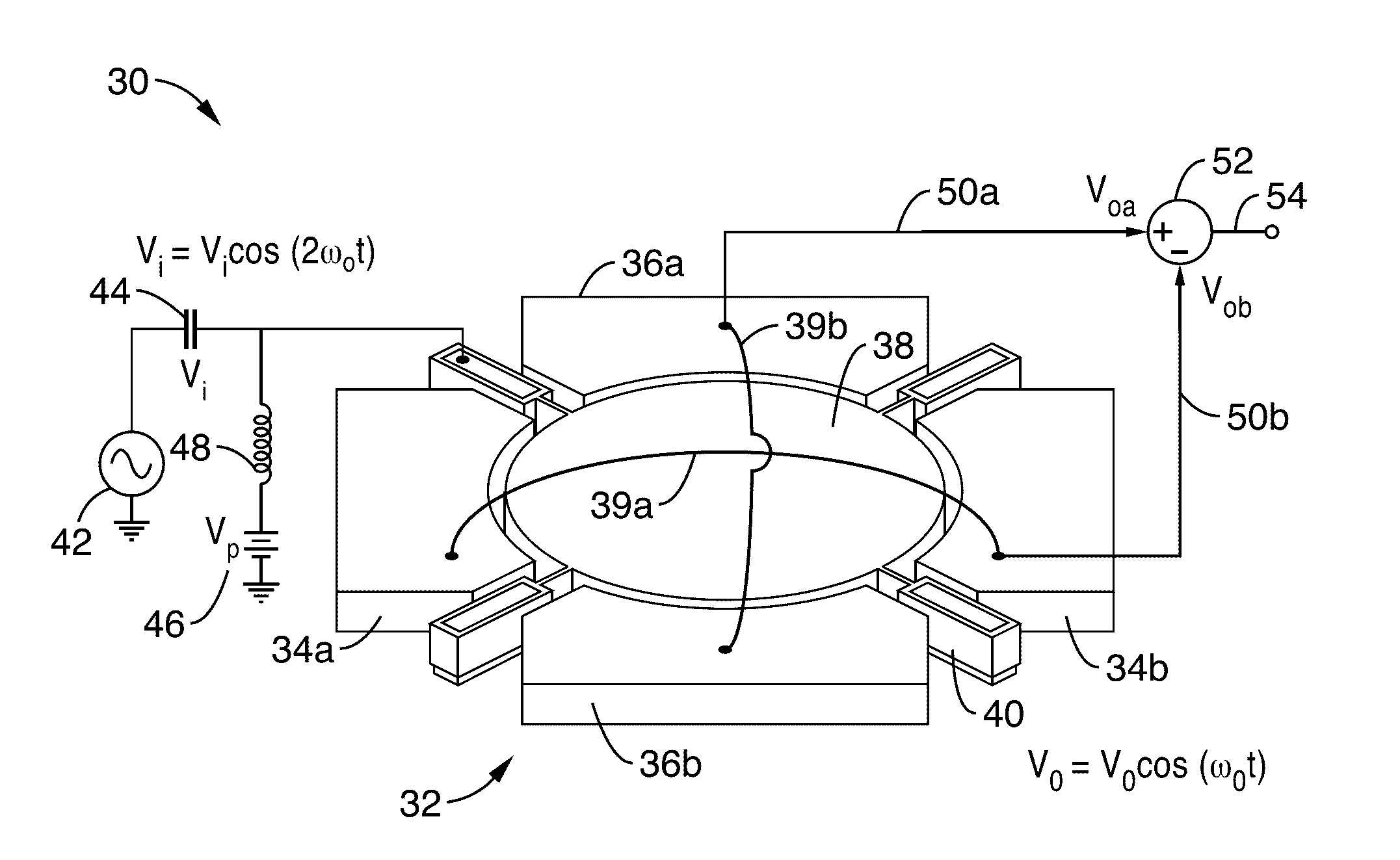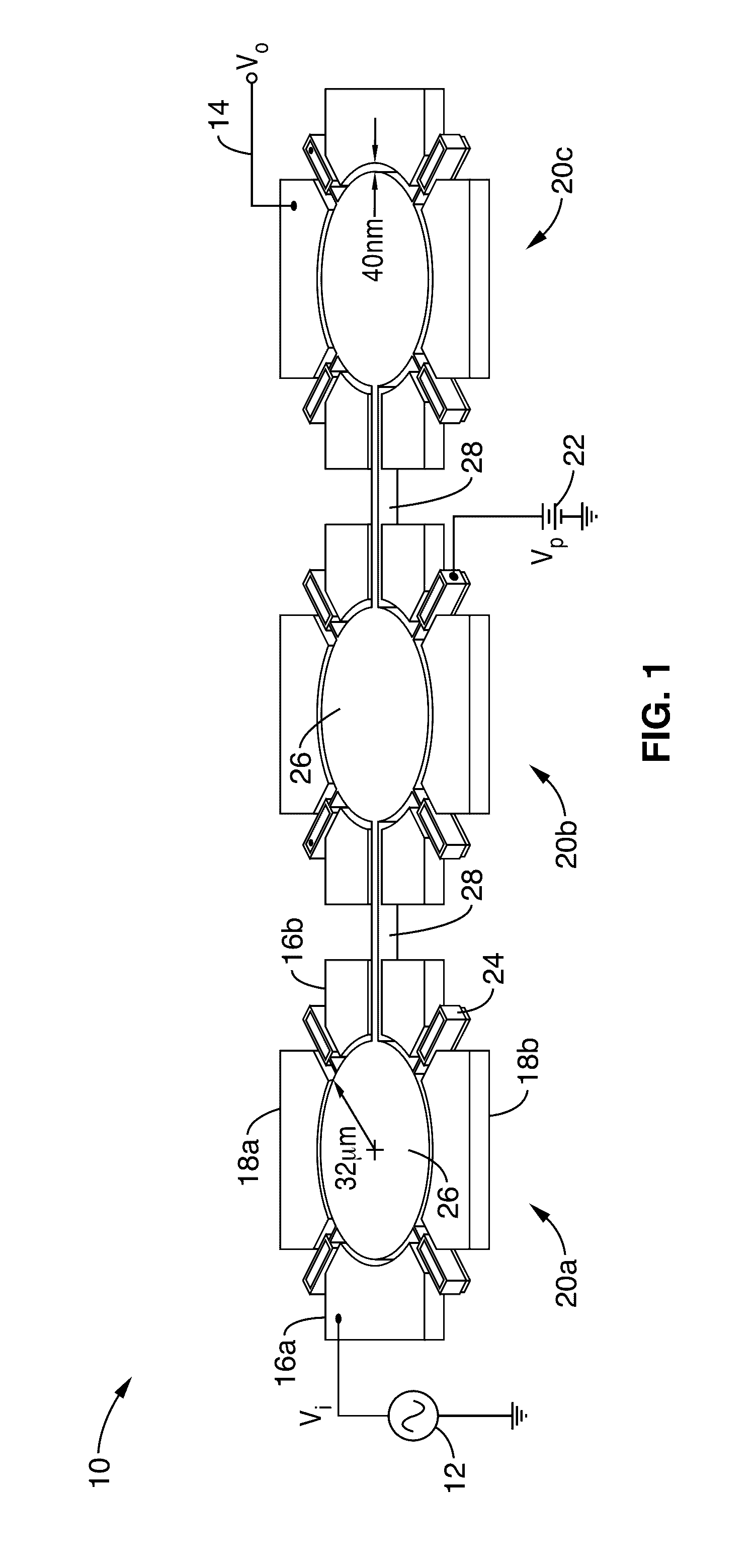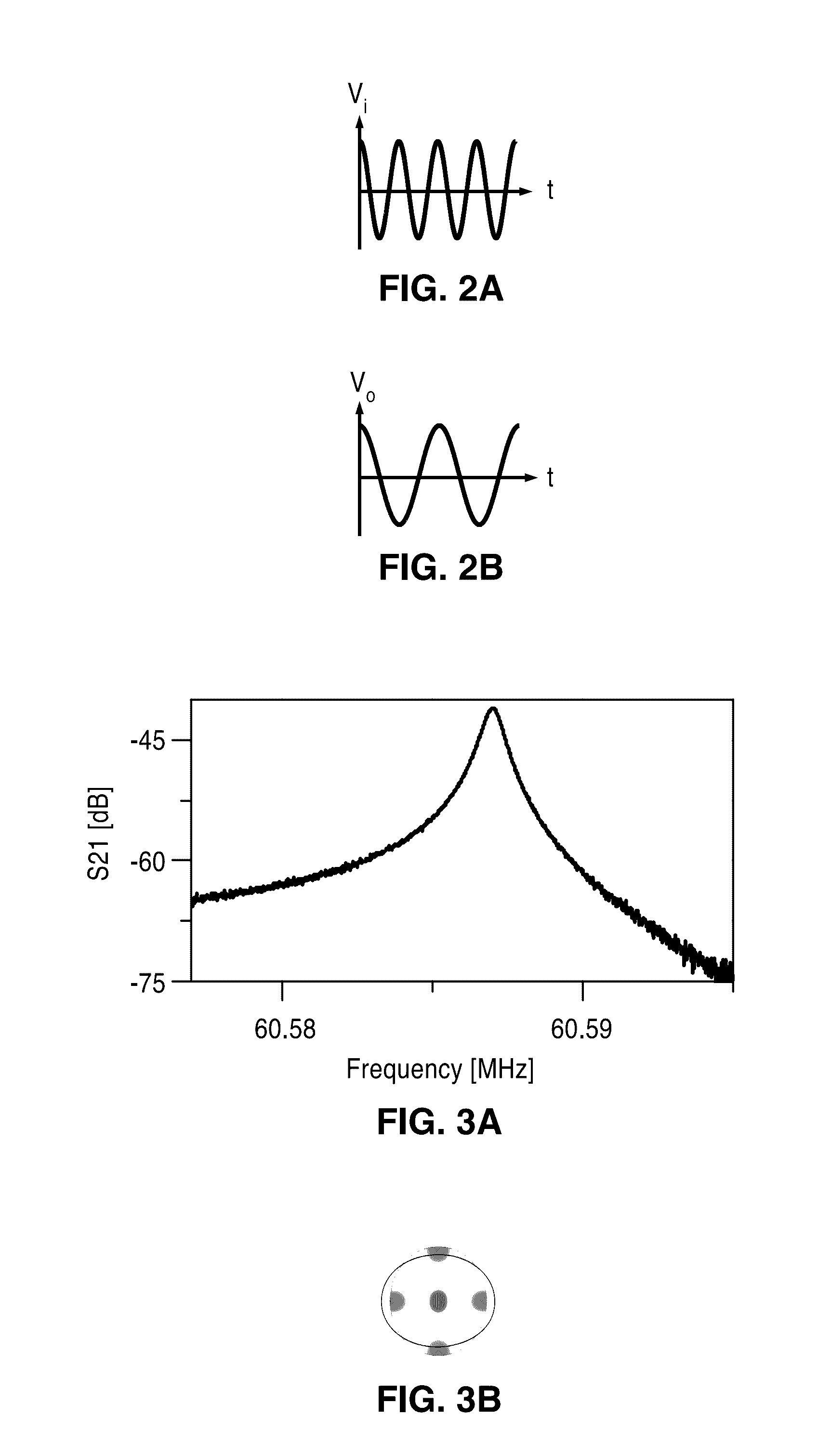Micromechanical frequency divider
a frequency divider and micro-mechanical technology, applied in the field of frequency dividers, can solve the problems of unfriendly 120 mw consumption of commercial csacs, and achieve the effects of consuming almost negligible power, high frequency operation, and minimal noise of divided signals
- Summary
- Abstract
- Description
- Claims
- Application Information
AI Technical Summary
Benefits of technology
Problems solved by technology
Method used
Image
Examples
Embodiment Construction
[0035]1. Introduction
[0036]The disclosure presents a frequency divider using a parametric amplification effect in a capacitive-gap / coupling / transducer transduced micro-electromechanical system (MEMS) device.
[0037]FIG. 1 illustrates an example embodiment 10 of a parametric divider showing 121-MHz pump signal vi 12 applied to the input electrodes and resultant 60.6-MHz signal on the output electrodes vo 14. By way of example and not limitation, the resonator structure utilized in this parametric divider comprises an array of wine-glass disks resonators. Each disk structure has input electrodes 16a, 16b, and output electrodes 18a, 18b. It should be appreciated that a typical embodiment includes electrical inter-connection of electrodes disposed on opposing sides of the resonator, such as connecting 16a to 16b, and 18a to 18b. However, it should also be noted that more general connection topologies may be utilized without departing from the teachings of this disclosure.
[0038]The disk ar...
PUM
 Login to View More
Login to View More Abstract
Description
Claims
Application Information
 Login to View More
Login to View More - R&D
- Intellectual Property
- Life Sciences
- Materials
- Tech Scout
- Unparalleled Data Quality
- Higher Quality Content
- 60% Fewer Hallucinations
Browse by: Latest US Patents, China's latest patents, Technical Efficacy Thesaurus, Application Domain, Technology Topic, Popular Technical Reports.
© 2025 PatSnap. All rights reserved.Legal|Privacy policy|Modern Slavery Act Transparency Statement|Sitemap|About US| Contact US: help@patsnap.com



